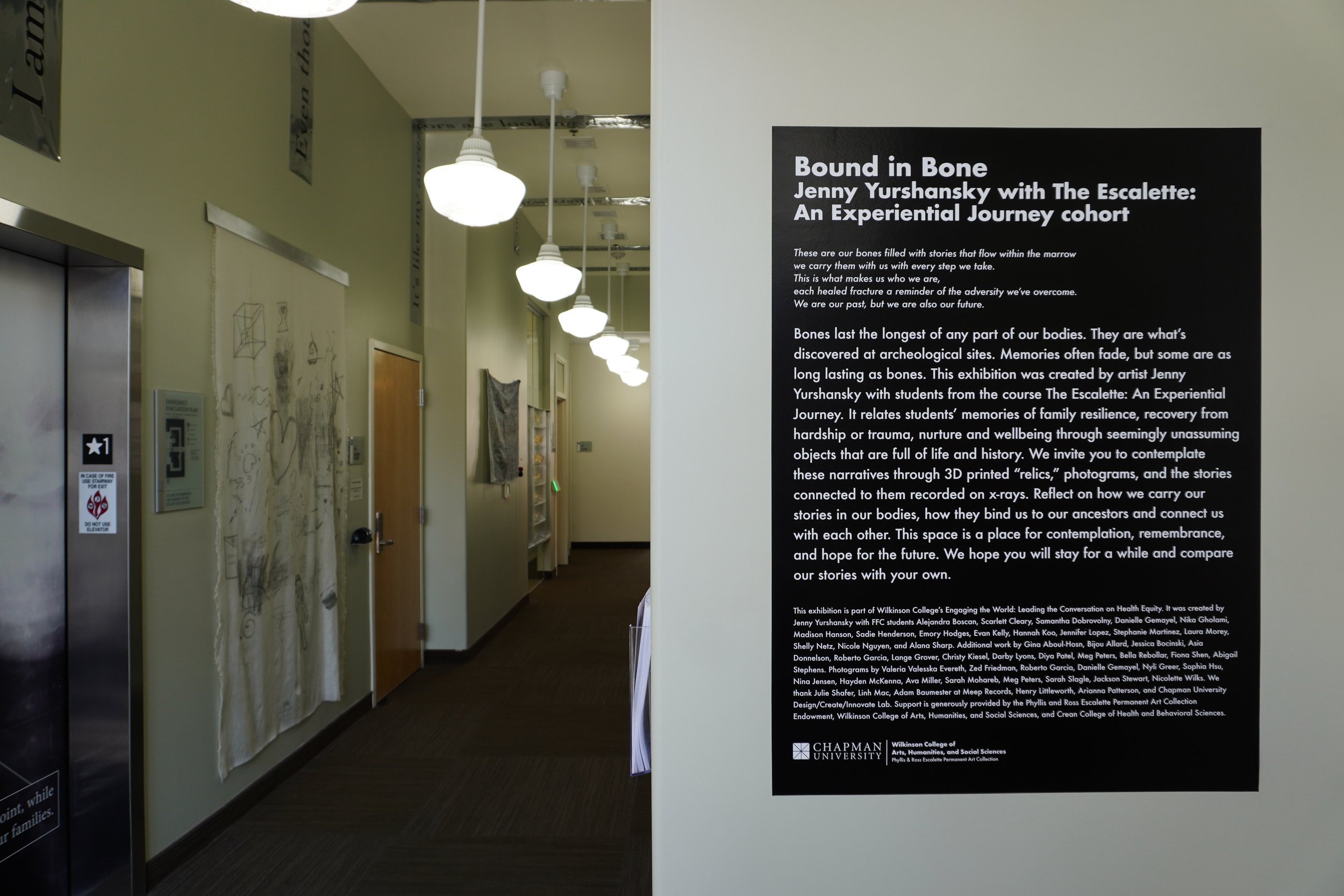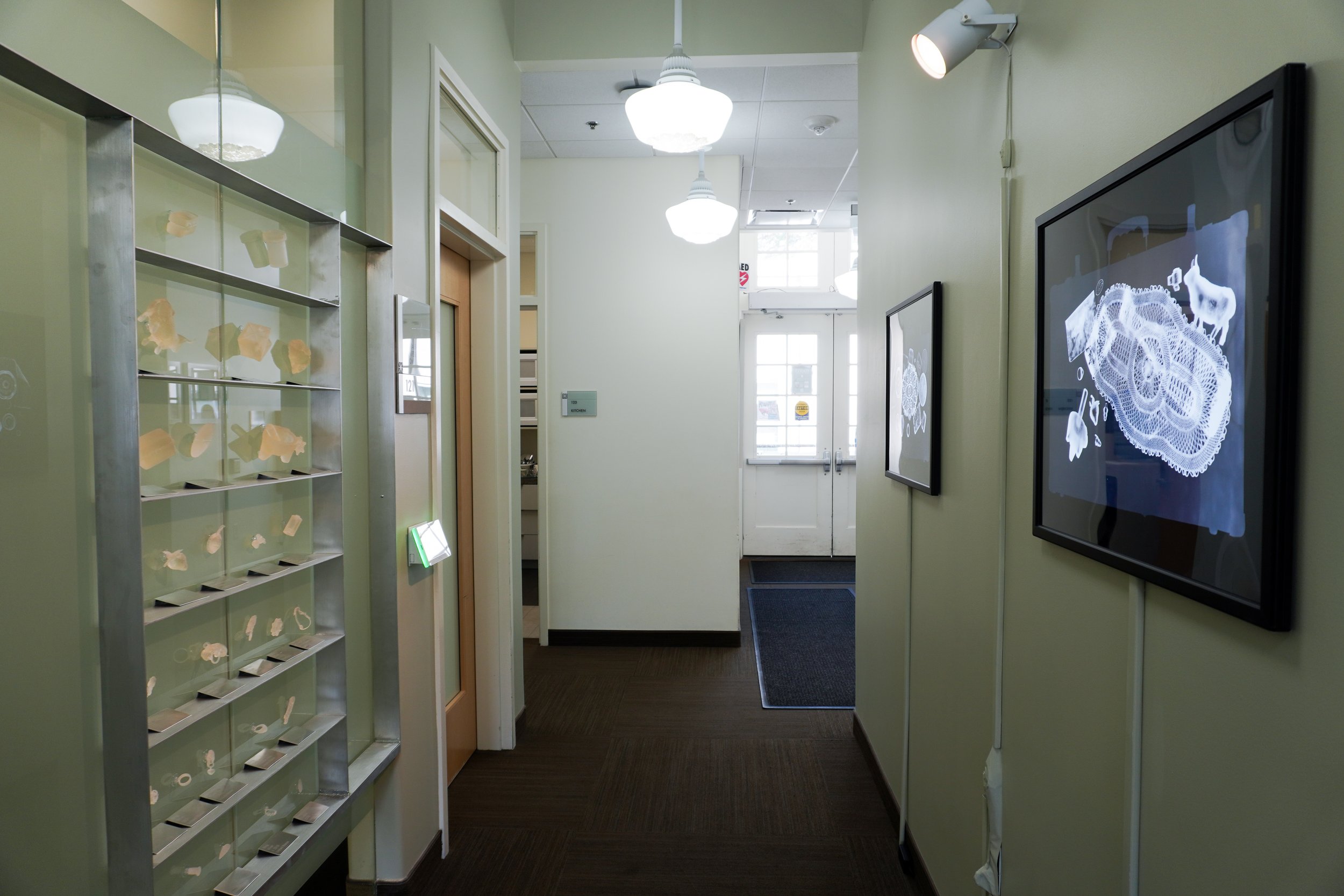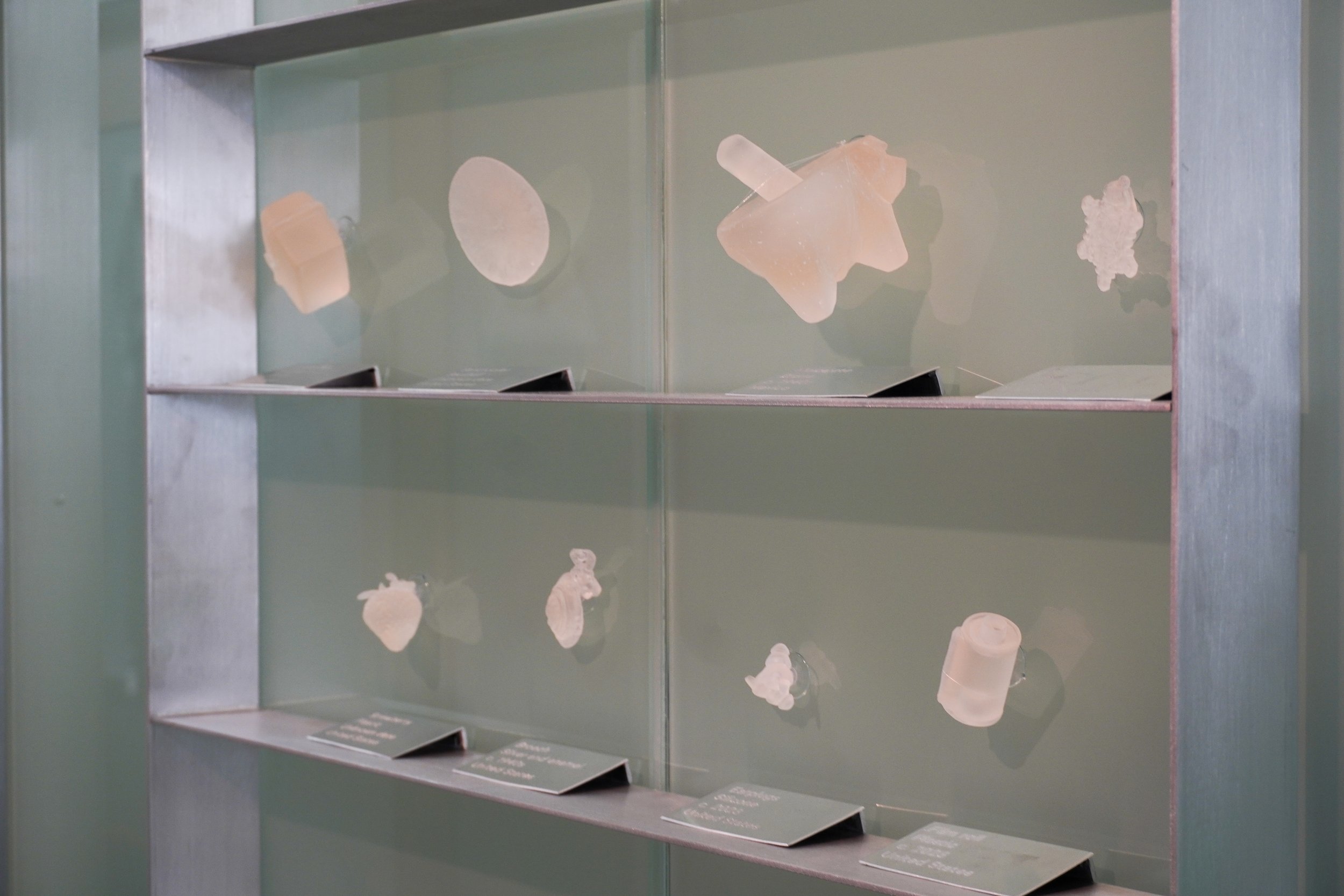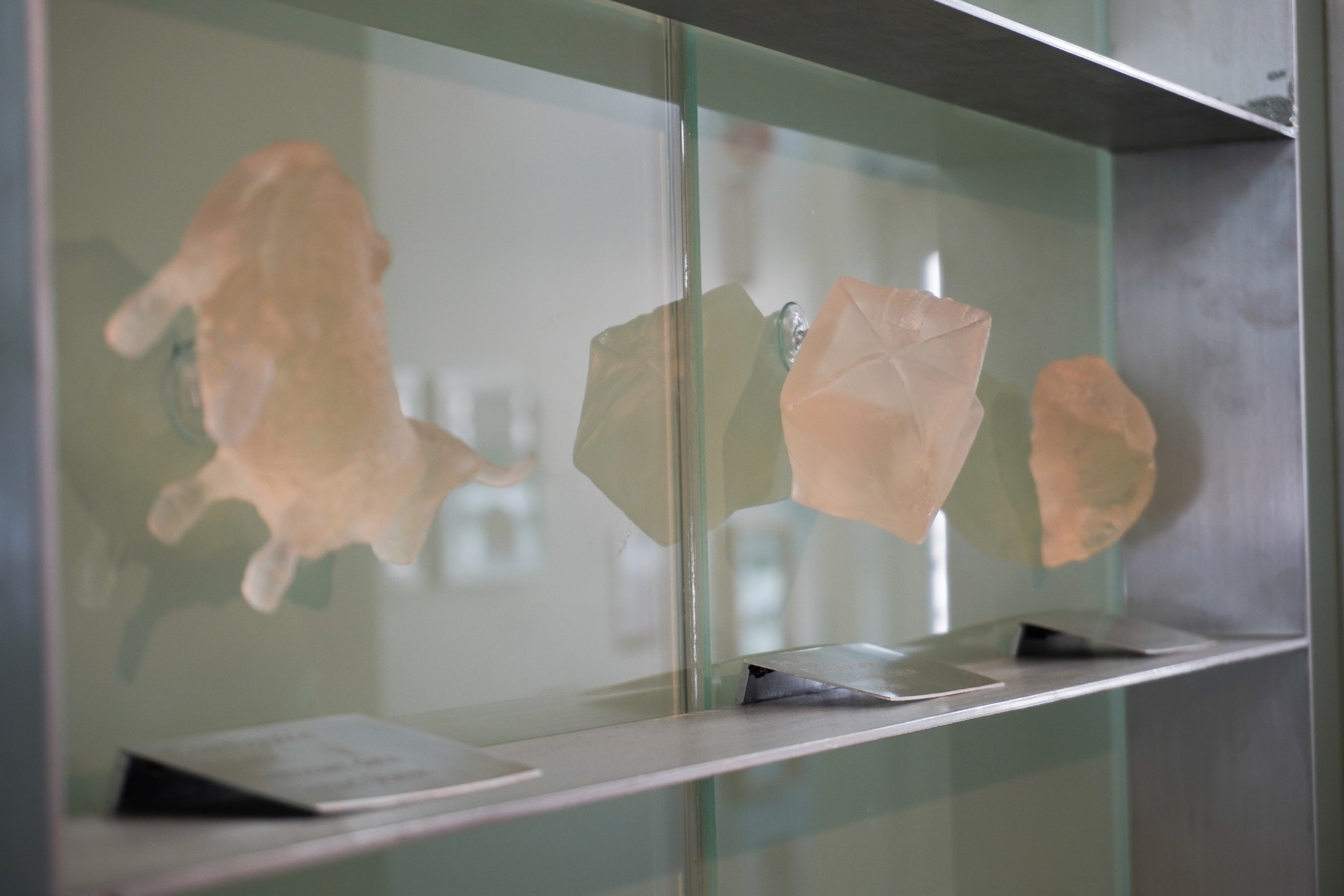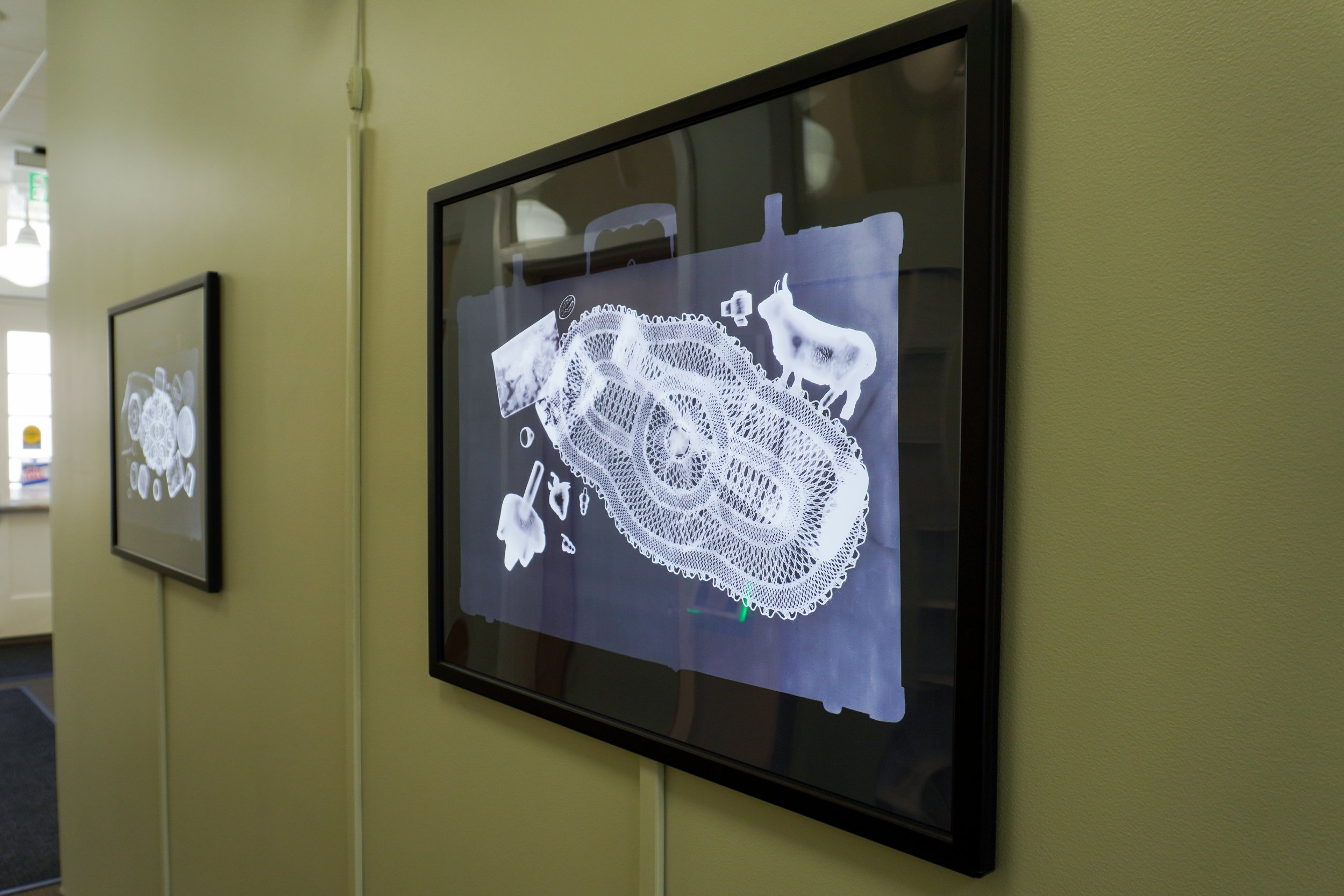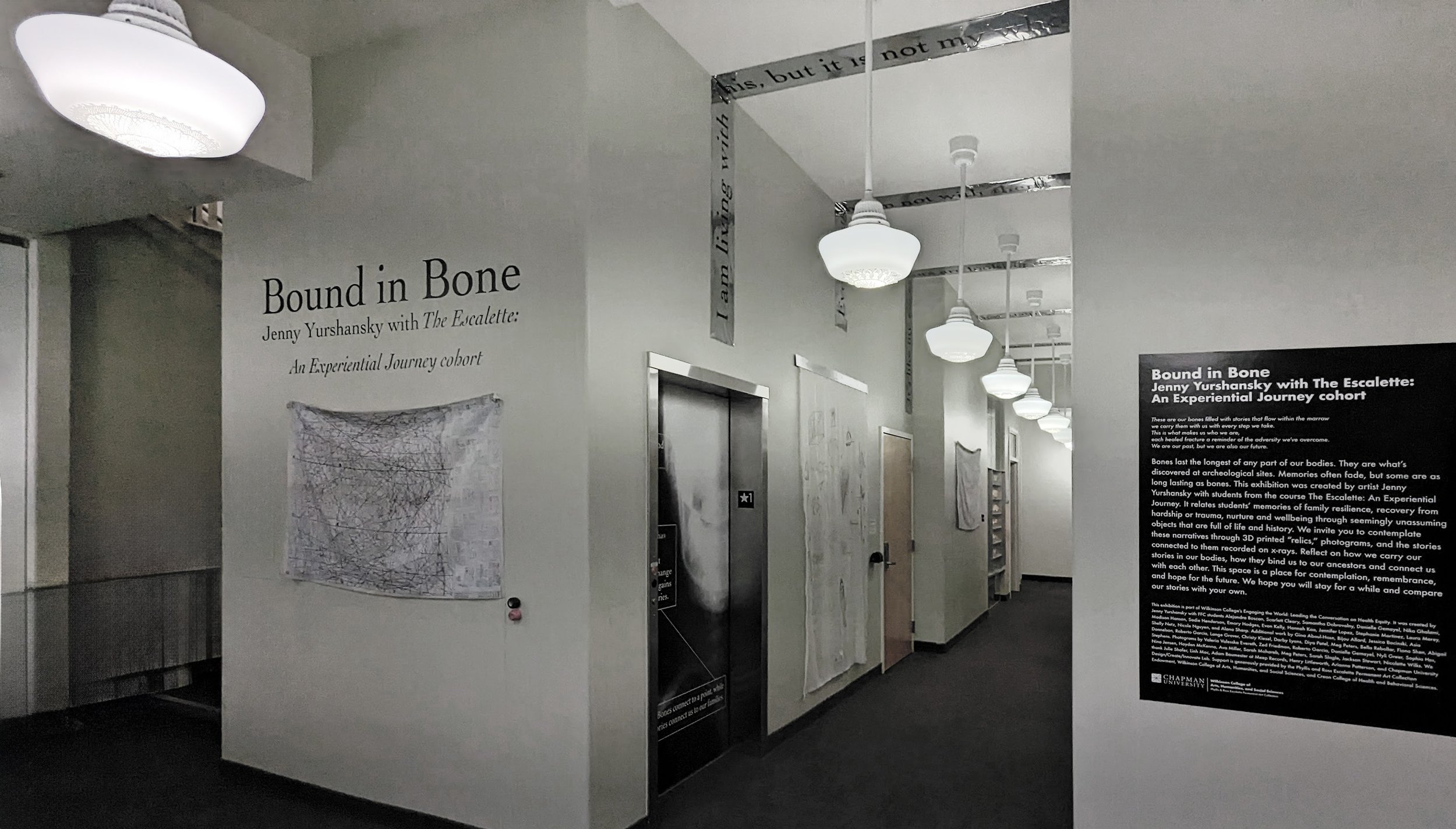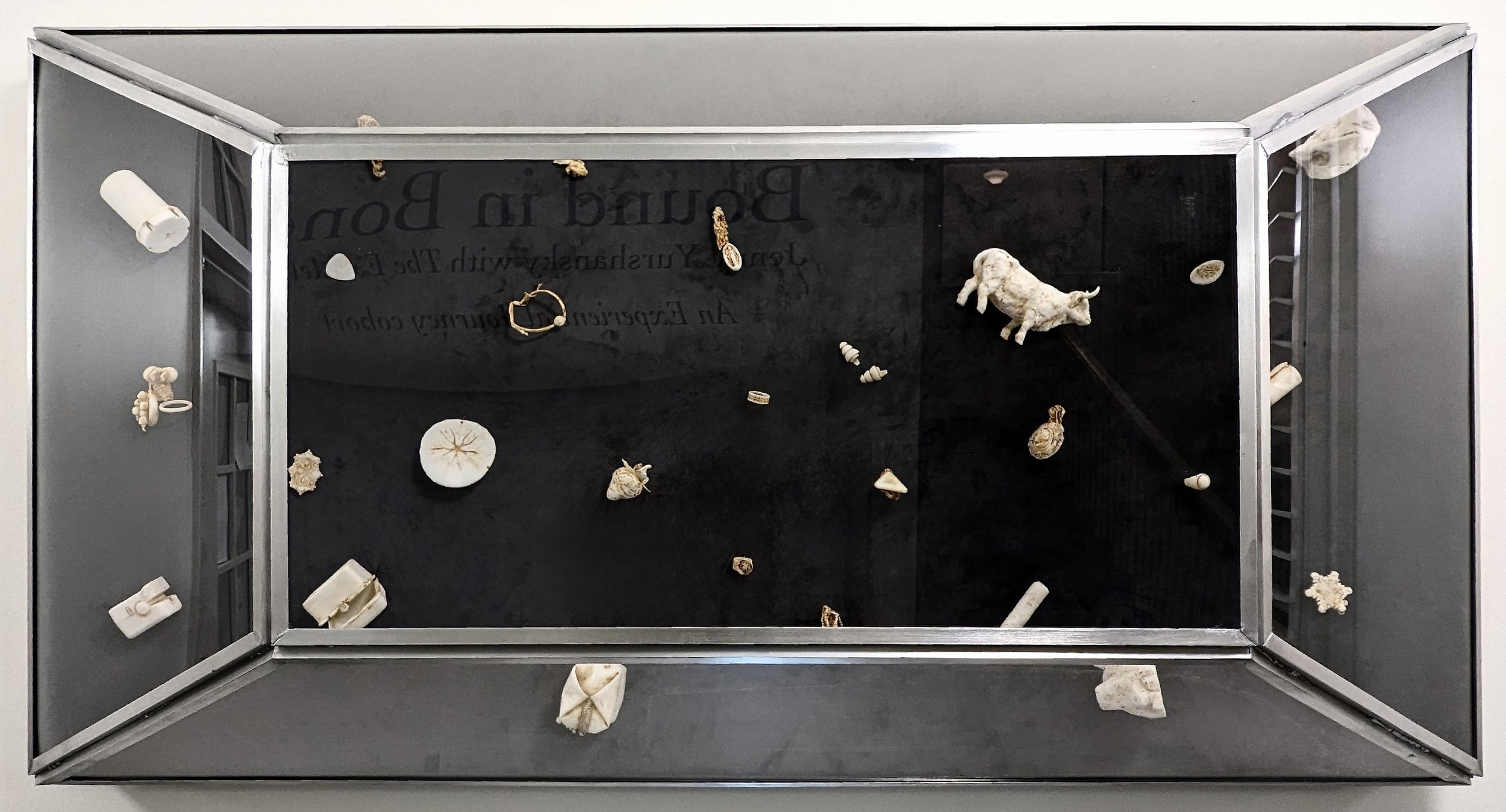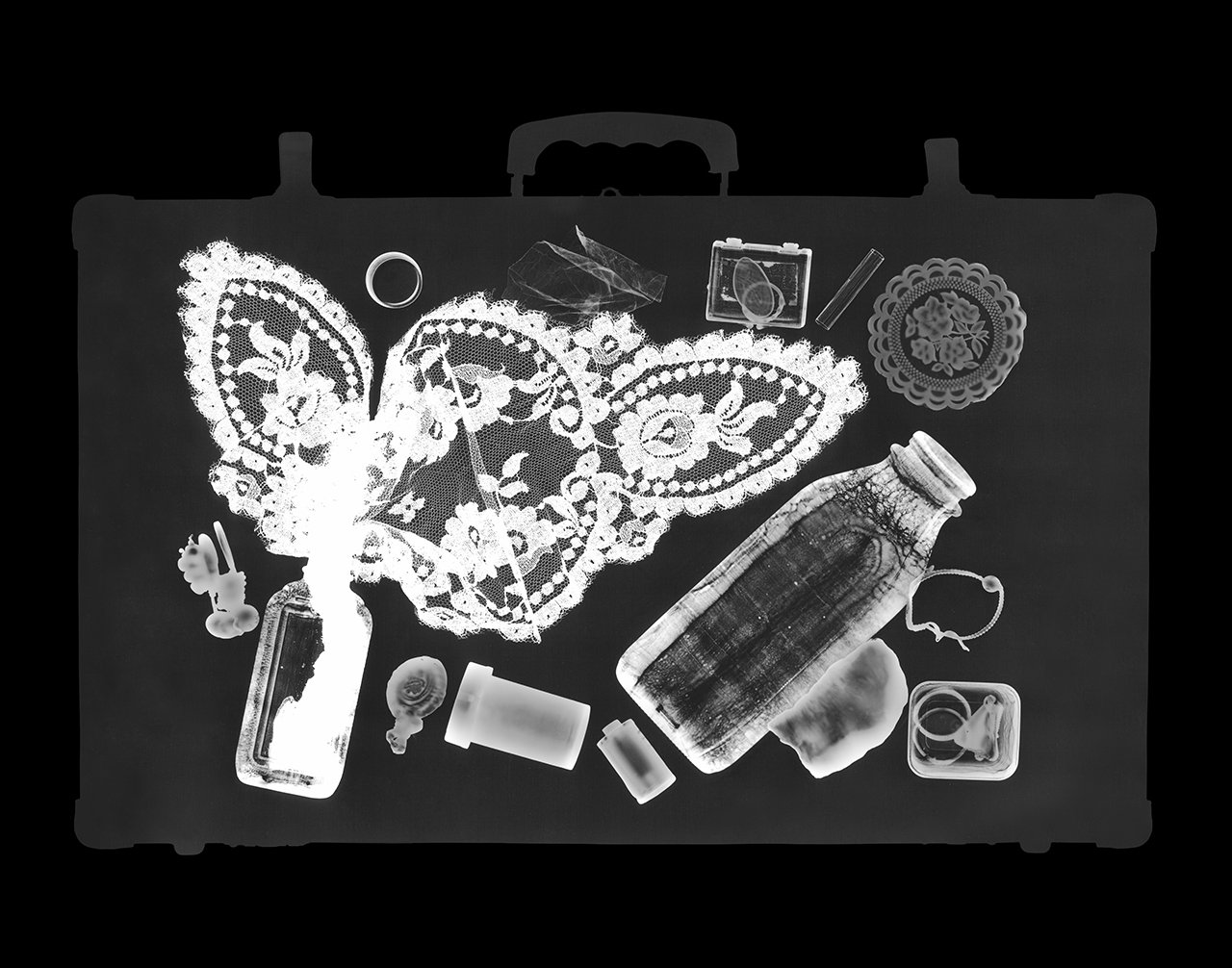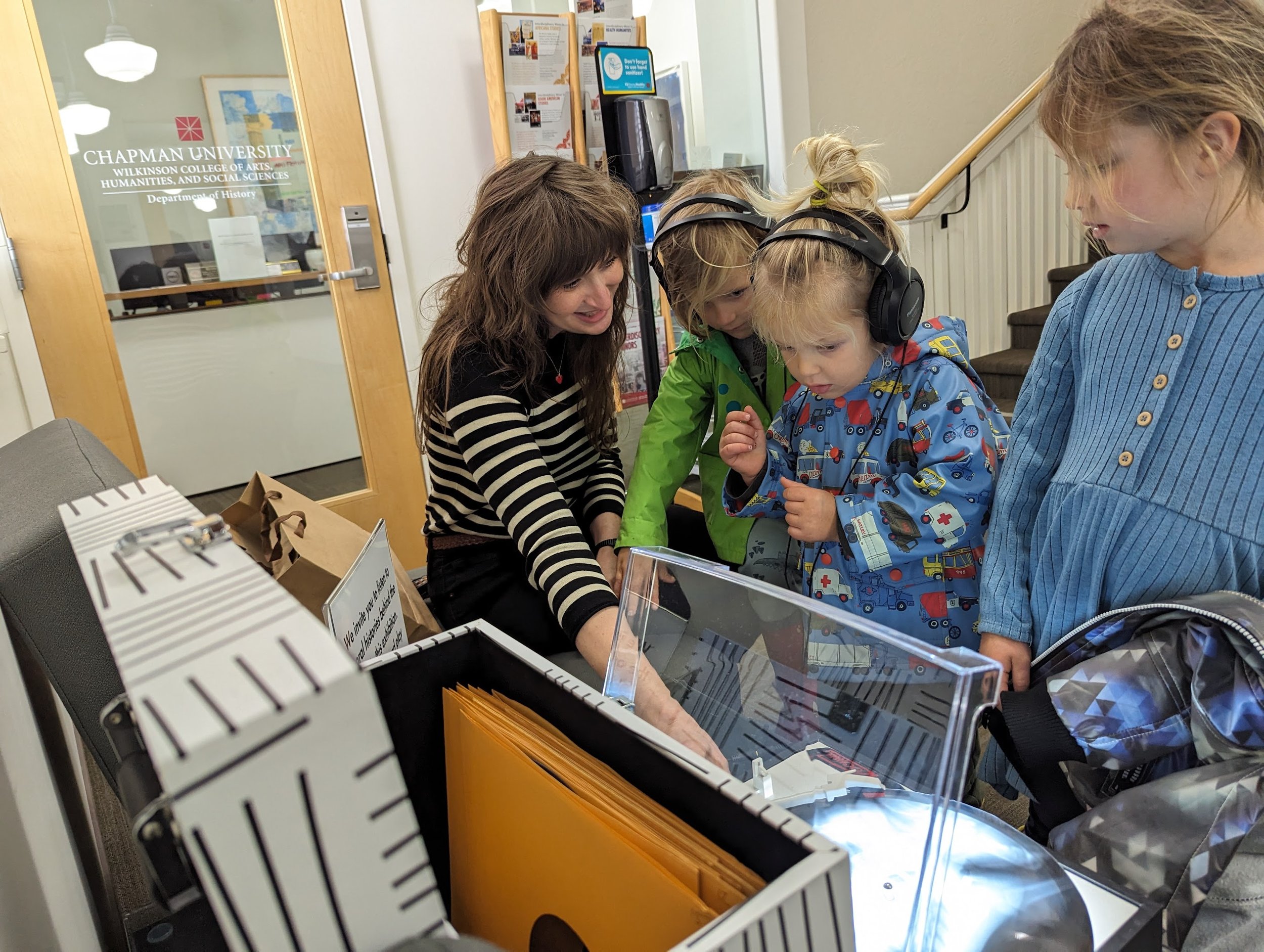Cut to the bone: Student-curated exhibit arrives in Escalette Art Collection
Chapman students partner with Los Angeles-based artist Jenny Yurshansky for an exhibition that explores family and what it means to connect with your roots. Photo courtesy of Jenny Yurshansky
Jenny Yurshansky is no stranger to messiness. Whether that be a spill in the classroom where she teaches art to middle school students or familial issues, she knows how hectic life can be.
Born stateless, Yurshansky and her family originated in Soviet-era Moldova and were forced to flee before her birth. Her experiences as an immigrant and refugee have had a profound impact on her art and the kinds of stories she likes to tell with it.
“My work, for a really long time, was thinking about migration, what we think of as ‘alien’ or ‘other’ or ‘belonging’ or ‘not belonging,’” Yurshansky said. “When does that shift happen from when you are ‘other’ to when you are ‘of’?”
Enter ‘Bound in Bone,’ an exhibition put together by Chapman University students with the help of Yurshansky and Chapman professor Fiona Lindsay Shen as part of the latter’s First-Year Foundations Course ‘The Escalette: An Experiential Journey.’
Originally, Yurshansky explored the concept of roots and familial trauma through scientific explorations into plants, intending to highlight the ways in which the clinical language reflected language used about immigrants and displaced peoples— usually in a derogatory sense. She hopes to create more of a conversation about the topic, which seems to be considered somewhat taboo. By focusing this student exhibition on family history, Yurshansky believes she has taken a step in the right direction.
“One of the key elements of the show is these (family) keepsakes,” Yurshansky told The Panther. “People brought in an object and then used the object basically as a keystone through which they were describing how this object is significant and relevant to how they think about their own family story and their place in that family story.”
Once students chose their keepsakes, the objects were then recreated using a 3D printer and adorned with resin in order to give them the look of bone. These objects line the walls in glass cases and are thoughtfully grouped together, allowing viewers to properly appreciate the ways in which some familial struggles are more universal than one might think. In addition, Shen’s class was able to collaborate with photography students, who created ‘photograms’ for the chosen objects. The space is set up to cause anyone who stops by to reflect, both on their own inner selves and on their families.
To start the project, students in Shen’s class had one-on-one interviews with Yurshansky in order for the artist to learn more about them and help them find a focus. These interviews were recorded and are part of the exhibition, taking the form of X-ray records that attendees can listen to. Diya Patel, a sophomore philosophy and psychology double major, spoke about how the process informed the finished product.
“Being interviewed by (Yurshansky) pushed you to contemplate the depths of your family history and how it shapes you into becoming the person you are,” Patel told The Panther.
Patel’s personal object was her grandmother’s ring, which caused her to reminisce about the time they spent sewing together when she was younger. Patel told The Panther that the project made her aware of all the stories she has yet to hear from her grandmother and how eager she is to hear them all.
“Talking about my grandmother with (Yurshansky) pushed me to spend more time with her. My grandmother is the person who taught me how to sew, so I saw many parallels between how (Yurshansky) connected with her mother and how I could connect with my grandmother. I like that the project pushed me to dig deeper to learn about my family stories...”
Something that makes this exhibition stand out from others is the fact that it’s curated by the students. Part of the curriculum for Shen’s class is learning how to curate art, and furthermore, learning how to do so as a collective. Yurshansky was also a source of wisdom for the students, which freshman creative writing major Alana Sharpe attested to.
“At first it was really intimidating because I’m an artistic person and I do have an artistic eye, but I’ve never personally curated an exhibit before,” Sharpe told The Panther. “So what was really comforting was that we had the whole collaboration with my entire class... Once we’d decided (the) main points that we would like to do for the curation, we would send them over to (Yurshansky), who has curated many exhibits before.”
The exhibition has put an emphasis on being as multimedia as possible, incorporating music, quotes, photos and a poem alongside the physical keepsakes. Sharpe, the author of the sole poem (which shares its title with the exhibition), gave a little insight into the effectiveness of the multimedia nature of the project.
“It’s super integrative, which is what I really appreciate about it. No matter where you’re looking, there’s always something that is there and cool and for you to enjoy. We really maximized the space the best we could.”
Photo courtesy of Jenny Yurshansky
Regardless of how many people are lucky enough to experience the exhibition in person, Yurshansky already considers it a success because of the connection it has fostered between the students. She is very pleased with the way it has made people stop to think about their own families and realize they’re not so different from their peers after all.
“For me, the success of the project is the part that I actually can’t document, and I’m fine with that,” Yurshansky said. “It’s kind of like ripples in a pond, knowing that this is the beginning and it’s an opening. It’s an understanding that begins to happen even as a person is sharing their story… Even when you’re listening to someone else, it can prompt you to self-reflect.”
The Bound in Bone exhibition can be viewed for free in Chapman’s Roosevelt Hall until November 2024. Tickets are not required, and tours can be scheduled every weekend with this link.
“For me, the success of the project is the part that I actually can’t document, and I’m fine with that. It’s kind of like ripples in a pond, knowing that this is the beginning and it’s an opening. It’s an understanding that begins to happen even as a person is sharing their story… Even when you’re listening to someone else, it can prompt you to self-reflect.”


